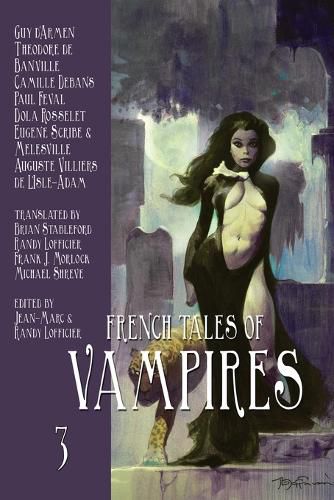Readings Newsletter
Become a Readings Member to make your shopping experience even easier.
Sign in or sign up for free!
You’re not far away from qualifying for FREE standard shipping within Australia
You’ve qualified for FREE standard shipping within Australia
The cart is loading…






This title is printed to order. This book may have been self-published. If so, we cannot guarantee the quality of the content. In the main most books will have gone through the editing process however some may not. We therefore suggest that you be aware of this before ordering this book. If in doubt check either the author or publisher’s details as we are unable to accept any returns unless they are faulty. Please contact us if you have any questions.
In the 1850s, when Paul Feval wrote The Vampire Countess, no one in France knew for sure how tolerant the reading public might be of fictions which brought vampirism into the real world. All the French literary works in which vampires had previously been featured had been calculatedly fanciful romances drawn from foreign sources and set in faraway places. A tale of Paris in the final days of the Consulate, which pretended to be true to the facts of history and employed a cast mingling real and fictitious individuals, must have seemed a different matter.
There were good reasons to doubt the propriety of placing a "real" vampire in such a setting. The victory of science over superstition, if not yet entirely secure, seemed inevitable. French readers had thrilled to the dark delights of German and English Gothic novels, but French novelists had not been nearly so willing to dabble in such absurdities.
The Vampire Countess, was probably the sixth full-length vampire novel to be published, and the first time the word vampire appeared as a feminine rather than a masculine noun. It would be a long time before any other writer contrived a vampire as perversely charismatic as The Vampire Countess or any of the characters featured in this anthology.
$9.00 standard shipping within Australia
FREE standard shipping within Australia for orders over $100.00
Express & International shipping calculated at checkout
This title is printed to order. This book may have been self-published. If so, we cannot guarantee the quality of the content. In the main most books will have gone through the editing process however some may not. We therefore suggest that you be aware of this before ordering this book. If in doubt check either the author or publisher’s details as we are unable to accept any returns unless they are faulty. Please contact us if you have any questions.
In the 1850s, when Paul Feval wrote The Vampire Countess, no one in France knew for sure how tolerant the reading public might be of fictions which brought vampirism into the real world. All the French literary works in which vampires had previously been featured had been calculatedly fanciful romances drawn from foreign sources and set in faraway places. A tale of Paris in the final days of the Consulate, which pretended to be true to the facts of history and employed a cast mingling real and fictitious individuals, must have seemed a different matter.
There were good reasons to doubt the propriety of placing a "real" vampire in such a setting. The victory of science over superstition, if not yet entirely secure, seemed inevitable. French readers had thrilled to the dark delights of German and English Gothic novels, but French novelists had not been nearly so willing to dabble in such absurdities.
The Vampire Countess, was probably the sixth full-length vampire novel to be published, and the first time the word vampire appeared as a feminine rather than a masculine noun. It would be a long time before any other writer contrived a vampire as perversely charismatic as The Vampire Countess or any of the characters featured in this anthology.